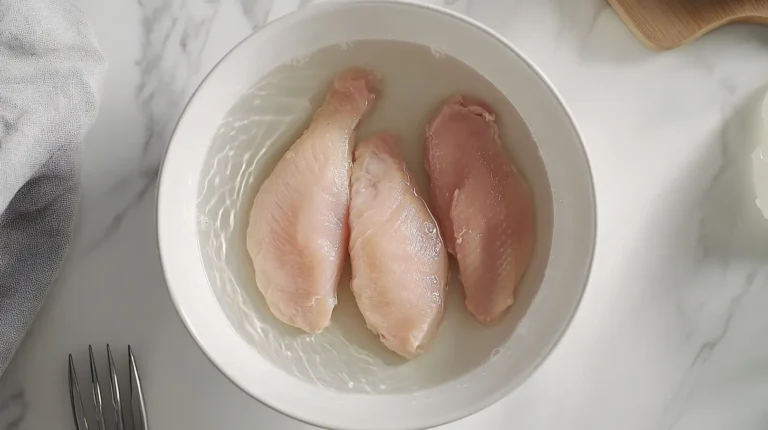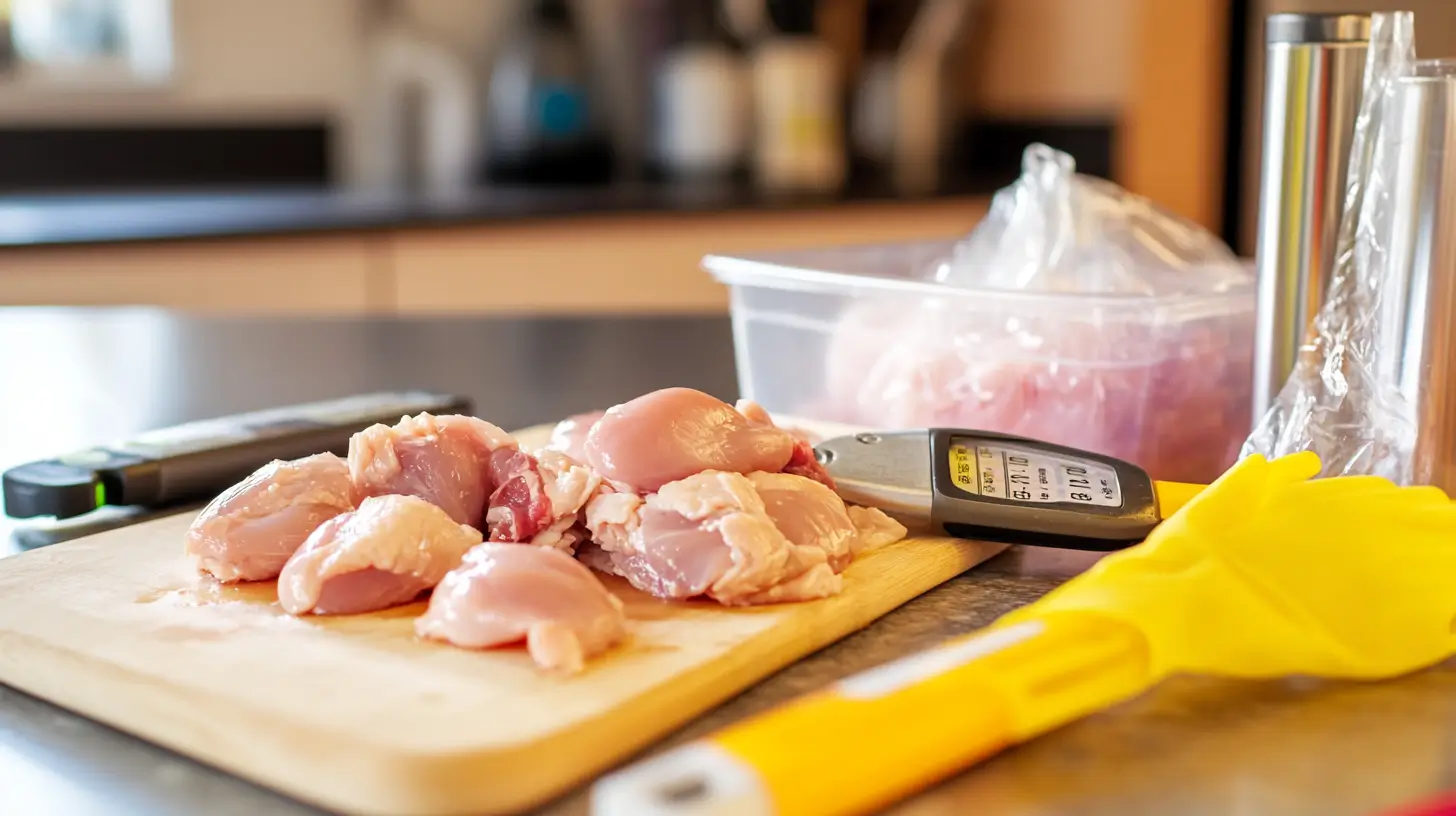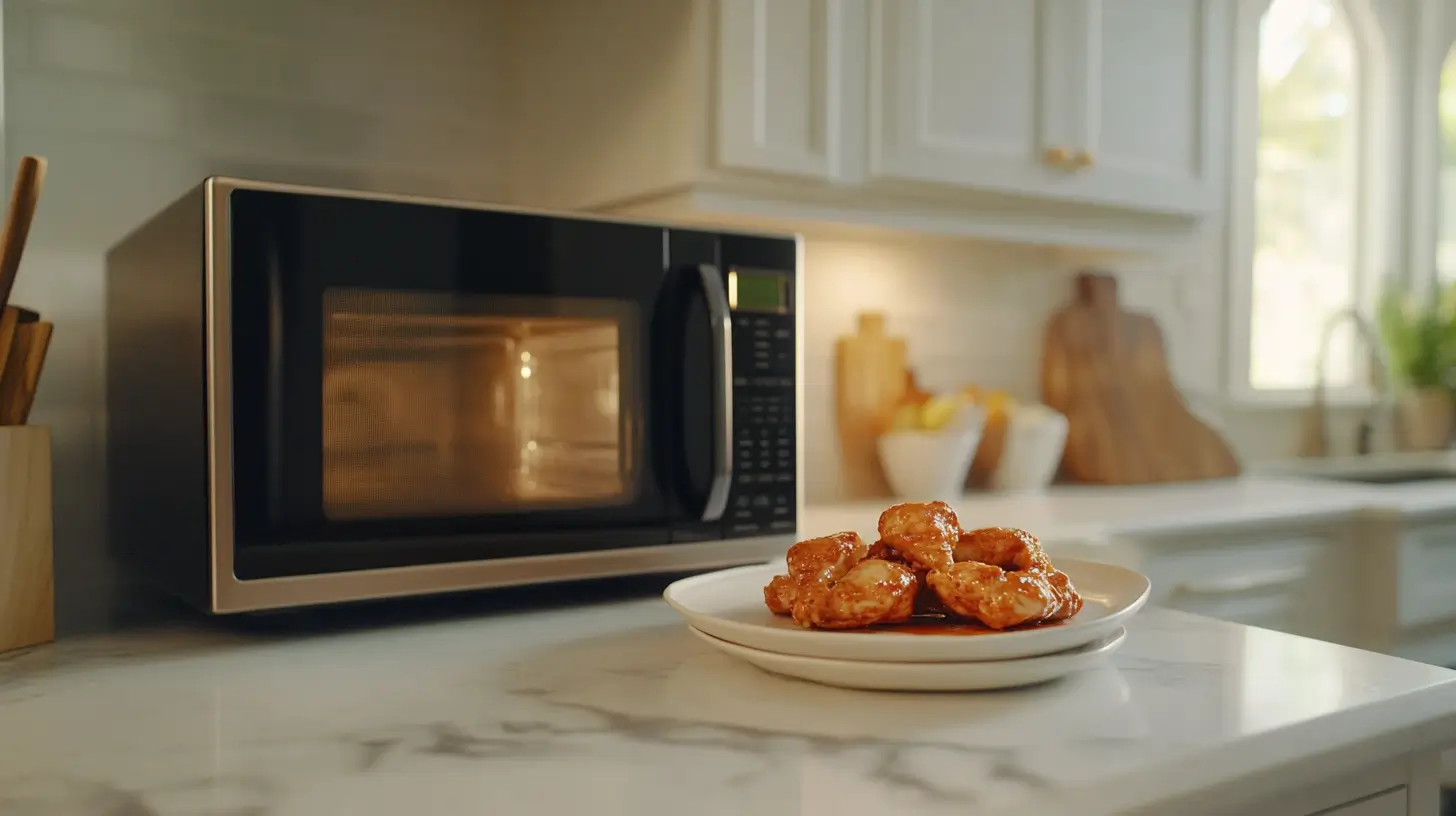Defrosting chicken is an essential part of meal preparation, and doing it correctly can make or break your recipe. Whether you’re planning a hearty dinner or a quick lunch, knowing how to quickly defrost chicken ensures both safety and flavor. Proper thawing helps preserve the chicken’s texture and taste while minimizing the risk of harmful bacteria growth. On the other hand, improper methods can lead to health hazards, ruining your meal and putting your well-being at risk.
Failing to follow safe defrosting practices can result in uneven thawing, leaving parts of the chicken frozen while others may start to cook, especially with certain methods like microwaving. This inconsistency not only affects the quality of your dish but also increases the chance of bacterial contamination. Understanding the science behind thawing chicken is crucial to keep your meals safe and delicious.
The Science Behind Defrosting Chicken
How Freezing and Thawing Affect Chicken
When chicken is frozen, water inside its cells forms ice crystals. These crystals expand and can damage the cell walls, leading to a loss of moisture when the chicken thaws. This is why improperly thawed chicken can turn out dry or rubbery. By learning how to quickly defrost chicken using the right methods, you can minimize these effects and retain its natural juices.
Safe thawing involves gradually raising the chicken’s temperature to avoid bacterial growth. At temperatures between 40°F and 140°F, bacteria like Salmonella and E. coli can multiply rapidly. By controlling the defrosting process, you reduce the risks while ensuring the chicken maintains its optimal texture.
Understanding Safe Thawing Temperatures
The key to safely defrosting chicken lies in keeping it out of the “danger zone” (40°F to 140°F). Methods like cold water thawing and sous vide allow you to defrost chicken efficiently while maintaining a consistent, safe temperature. Whether you’re using a microwave, cold water, or sous vide, each method has unique benefits and precautions to consider.
Methods to Quickly Defrost Chicken
Cold Water Thawing
Cold water thawing is a fast and reliable method to defrost chicken safely. By submerging the chicken in cold water, you can maintain a safe temperature while speeding up the thawing process. This method is ideal for those wondering how to quickly defrost chicken without compromising quality.
Advantages:
- Consistent thawing
- Maintains texture and flavor
- Safe when done correctly
Disadvantages:
- Requires attention to water changes
- Slightly longer than microwave thawing
Microwave Defrosting
Microwave defrosting is one of the fastest ways to thaw chicken. This method is particularly useful for small cuts or when you’re pressed for time. However, it requires careful monitoring to avoid uneven defrosting.
Advantages:
- Quick results
- Minimal setup required
Disadvantages:
- Risk of partial cooking
- Can affect texture
Instant Pot or Sous Vide Techniques
For those seeking precision, sous vide or Instant Pot techniques provide excellent results. Sous vide allows you to thaw chicken in a temperature-controlled water bath, while Instant Pot options can defrost and cook simultaneously.
Advantages:
- Precise temperature control
- Preserves moisture
Disadvantages:
- Requires special equipment
- Slightly longer time compared to other methods
Step-by-Step Instructions for Cold Water Thawing
Required Tools
To get started, gather the following:
- A large bowl or sink
- Plastic freezer bags
- Cold water (around 40°F)
Timing Guidelines
For every pound of chicken, allow 30 minutes of defrosting time. Whole chickens may take longer, but this method ensures even thawing while maintaining safety.
Safety Tips
- Ensure the chicken is in a sealed bag to prevent water exposure.
- Change the water every 30 minutes to keep it cold.
- Avoid using warm water, as it increases the risk of bacterial growth.
Microwave Defrosting: Pros and Cons
Choosing the Right Microwave Setting
Understanding your microwave’s defrost setting is crucial when learning how to quickly defrost chicken. Most microwaves offer a specific defrost function that adjusts power levels to thaw food gradually without cooking it.
Steps for Even Defrosting
- Place the chicken on a microwave-safe plate.
- Use the defrost setting or set the power to 30%.
- Rotate the chicken halfway through to ensure even thawing.
Avoiding Partially Cooked Spots
To prevent uneven defrosting, monitor the chicken closely. Pause the microwave every few minutes to check the progress and adjust as needed.
Sous Vide for Quick Defrostin
How Sous Vide Works for Thawing
Sous vide involves vacuum-sealing chicken and submerging it in a water bath maintained at a specific temperature. This method ensures controlled thawing without exposing the chicken to the danger zone.
Best Practices for Sous Vide Defrosting
- Set the water bath temperature to around 100°F for defrosting.
- Use vacuum-sealed bags to prevent water from entering.
- Monitor the process to avoid over-thawing.
Equipment Needed
- Sous vide machine
- Vacuum sealer or resealable freezer bags
- Large container for the water bath
Tips for Speeding Up the Process Safely
Flattening Chicken Before Freezing
Flattening chicken breasts or separating pieces before freezing can significantly reduce thawing time. This method ensures even freezing and faster defrosting when you’re ready to cook.
Using Freezer Bags for Better Results
Proper storage techniques can streamline the defrosting process. Use airtight freezer bags to prevent freezer burn and make chicken easier to thaw.
Avoiding Cross-Contamination
Always handle raw chicken with care to avoid cross-contamination. Use separate utensils and cutting boards, and wash your hands thoroughly after touching raw chicken.
Common Mistakes to Avoid
Using Hot Water
One of the most common errors when learning how to quickly defrost chicken is using hot water. While this might seem like a faster option, it creates an uneven temperature distribution. The outer layers of the chicken may start to cook, while the interior remains frozen. Moreover, hot water accelerates bacterial growth, putting you at risk of foodborne illnesses.
Instead, always use cold water or a controlled method like sous vide. These techniques balance speed and safety, ensuring the chicken thaws evenly without compromising its quality.
Leaving Chicken on the Counter
Leaving chicken to thaw at room temperature is a mistake that many make out of convenience. This practice can quickly push the chicken into the “danger zone,” where bacteria multiply rapidly. Even if the chicken appears thawed on the outside, the interior might still be frozen, creating a perfect environment for bacteria to thrive.
To avoid this, always use refrigeration, cold water, or a microwave for defrosting.
Forgetting to Check Internal Temperature
Skipping the internal temperature check is another common oversight. Proper thawing ensures that the chicken reaches a uniform temperature throughout. Use a food thermometer to confirm that the chicken’s core is thawed. Neglecting this step could lead to under-thawed portions, which affect cooking times and safety.
How to Tell If Chicken Is Properly Thawed
Visual and Tactile Clues
When learning how to quickly defrost chicken, recognizing visual and tactile signs is essential. Properly thawed chicken should feel pliable and soft to the touch. It should no longer have ice crystals or a rigid texture. However, it should remain cool, indicating it hasn’t warmed into the danger zone.
Using a Food Thermometer
A food thermometer is a reliable tool for checking whether chicken is fully thawed. Insert the thermometer into the thickest part of the meat; it should read above 32°F but below 40°F. This ensures the chicken is thawed but not warm enough to encourage bacterial growth.
Risks of Under-Thawed Chicken in Quick Defrosting Methods
Cooking under-thawed chicken can result in uneven cooking, with parts of the meat remaining raw. This increases the risk of foodborne illnesses and compromises the quality of your dish. Proper thawing ensures a safe and enjoyable meal.
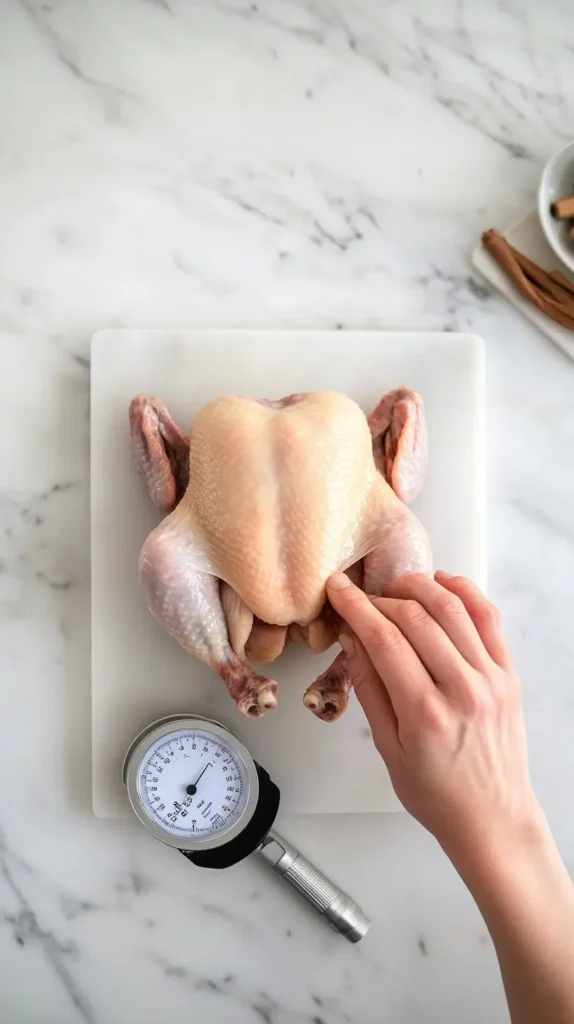
Storing Thawed Chicken Safely
Refrigeration Guidelines for Defrosted Chicken
Once you’ve successfully defrosted your chicken, store it in the refrigerator at 40°F or below. Keeping the chicken cool slows bacterial growth, preserving its freshness until you’re ready to cook.
How Long Thawed Chicken Lasts
Chicken that has been thawed in the refrigerator can be safely stored for 1 to 2 days. For chicken defrosted using other methods, like cold water or a microwave, it’s best to cook it immediately to avoid spoilage.
Refreezing Chicken After Defrosting
If you’ve thawed chicken in the refrigerator and didn’t cook it, you can refreeze it within 1 to 2 days. However, repeated freezing and thawing can affect the meat’s texture and flavor. Avoid refreezing chicken thawed using faster methods, as it may compromise safety and quality.
The Importance of Food Safety in Defrosting
Preventing Foodborne Illnesses When Defrosting Chicken Quickly
When discussing how to quickly defrost chicken, food safety is paramount. Improper thawing methods can lead to bacterial growth, resulting in illnesses caused by pathogens like Salmonella and Campylobacter. Adhering to safe practices minimizes these risks and ensures your meals are healthy.
Proper Cleaning Practices
Cleaning surfaces, utensils, and your hands is crucial when handling raw chicken. Cross-contamination is a major concern, especially during defrosting. Use separate cutting boards for raw and cooked foods, and disinfect all tools and countertops immediately after use.
Benefits of Quick Defrosting Methods
Time-Saving Advantages of Quick Chicken Thawing
Quick defrosting methods like microwaving or sous vide save valuable time, allowing you to prepare meals without extended waiting periods. Knowing how to quickly defrost chicken efficiently is a game-changer for busy home cooks.
Maintaining Chicken Quality
Speedy yet controlled defrosting methods preserve the chicken’s moisture and texture. Techniques like sous vide or cold water thawing prevent freezer burn and retain the chicken’s natural flavor, ensuring better results in your dishes.
Recipes Using Quickly Defrosted Chicken
Quick Chicken Stir-Fry With Defrosted Chicken
A stir-fry is a perfect recipe for quickly defrosted chicken. Slice thawed chicken into thin strips, then sauté with vegetables and your favorite sauce for a flavorful, fast dinner.
15-Minute Chicken Soup
Use your defrosted chicken to create a comforting soup in just 15 minutes. Combine the chicken with broth, vegetables, and noodles for a simple yet hearty meal.
Grilled Chicken Salad
Quickly defrosted chicken is ideal for salads. Grill the chicken until fully cooked, slice it, and add it to a bed of fresh greens, topped with your favorite dressing.
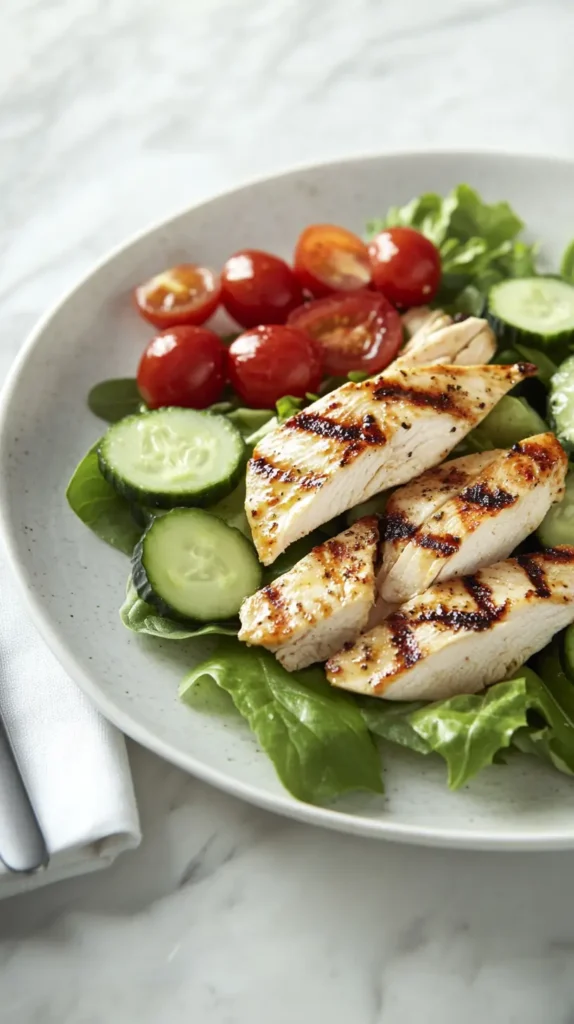
FAQs About Defrosting Chicken
How to Unthaw Chicken Fast?
To unthaw chicken quickly and safely, use one of these methods:
- Cold Water Thawing: Submerge the chicken in cold water while keeping it sealed in a plastic bag. Change the water every 30 minutes to maintain a safe temperature. This method takes about 30 minutes per pound of chicken.
- Microwave Thawing: Use your microwave’s defrost setting for faster results. Rotate and check the chicken periodically to ensure even thawing. Be prepared to cook the chicken immediately after defrosting using this method.
- Sous Vide Method: If you have sous vide equipment, you can defrost chicken in a temperature-controlled water bath for safe and even thawing.
Avoid using hot water or leaving chicken at room temperature, as these methods can encourage bacterial growth.
Can You Thaw Chicken in the Microwave?
Yes, you can thaw chicken in the microwave. It’s one of the quickest methods, especially for smaller cuts like chicken breasts or thighs. Use the defrost setting or set your microwave to 30% power to gradually thaw the chicken. Rotate the chicken or separate pieces if they begin to thaw unevenly. Be cautious, as parts of the chicken may begin to cook during the process.
Important Tip: Cook the chicken immediately after thawing in the microwave to prevent bacterial growth.
Can You Cook Chicken Frozen
Yes, you can cook chicken directly from frozen, but it requires longer cooking times. The USDA recommends increasing the cooking time by 50% to ensure the chicken reaches an internal temperature of 165°F.
Popular cooking methods for frozen chicken include:
- Baking: Place frozen chicken in a preheated oven and bake until fully cooked.
- Boiling: Add frozen chicken to boiling water or broth to cook evenly.
- Pressure Cooking: Use an Instant Pot to cook frozen chicken quickly.
Avoid grilling or sautéing frozen chicken, as the exterior may cook too quickly, leaving the inside undercooked.
Can I Defrost Chicken in the Microwave?
Yes, you can defrost chicken in the microwave using the defrost function or by setting the power to 30%. Place the chicken on a microwave-safe plate and check it every 2 to 3 minutes, rotating or flipping it to ensure even thawing.
Precautions:
- Remove any packaging before microwaving.
- Monitor closely to avoid partially cooking the chicken during defrosting.
- Cook the chicken immediately after defrosting to ensure safety and freshness.
This method is ideal when you’re short on time but still want to prepare a safe and delicious meal.
Conclusion: Mastering the Art of Defrosting Chicken
Key Tips for Quickly and Safely Defrosting Chicken at Home
Learning how to quickly defrost chicken safely involves choosing the right methods, avoiding common mistakes, and ensuring proper storage. Cold water thawing, microwave defrosting, and sous vide techniques are all effective ways to thaw chicken quickly while preserving quality and safety.
Encouragement to Practice Safe Defrosting
By mastering these methods and incorporating food safety practices, you can confidently prepare meals without compromising flavor or health. Practice these techniques, and you’ll save time while ensuring delicious, perfectly cooked chicken every time.

